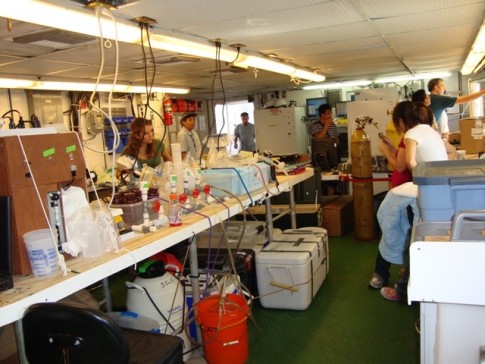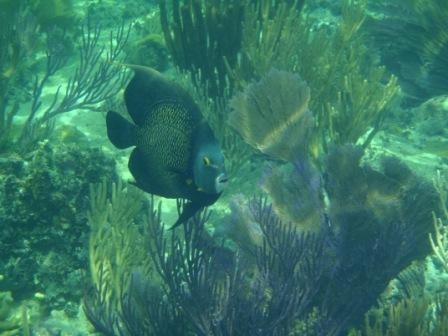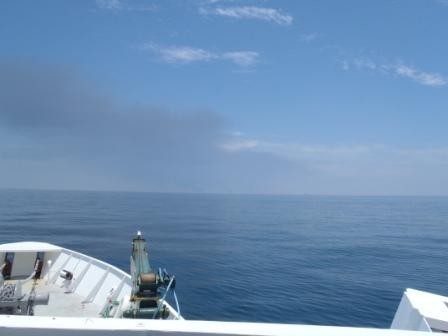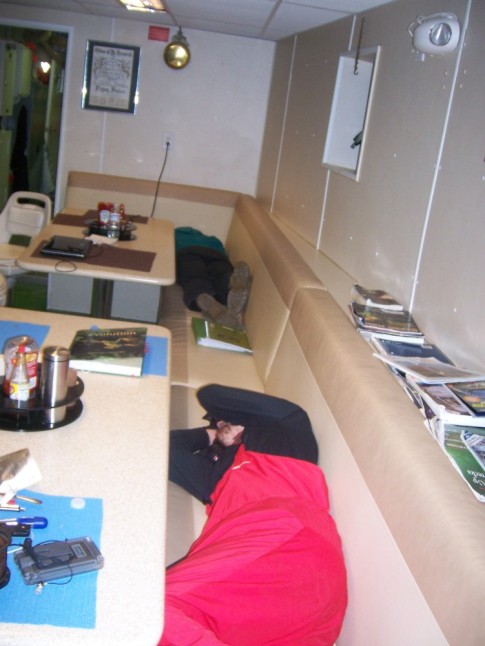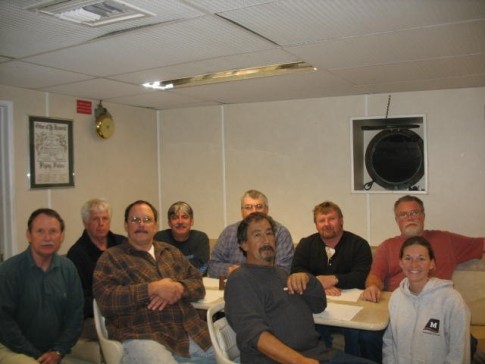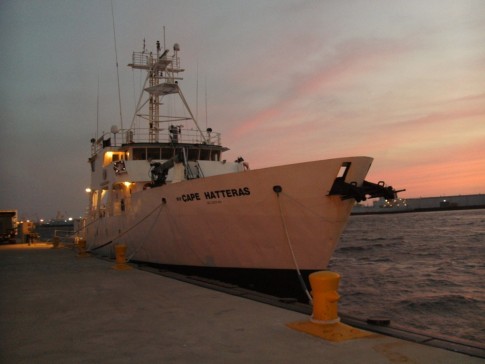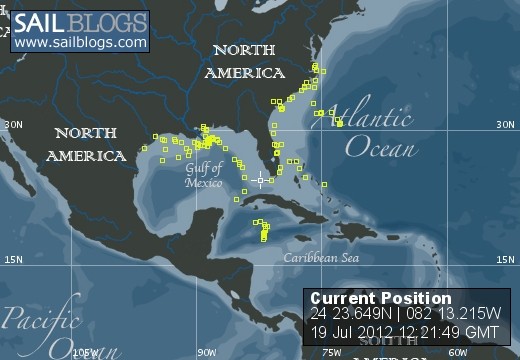
Research Vessel Cape Hatteras
The R/V CAPE HATTERAS is owned by the National Science Foundation and operated under a renewable Charter Party Agreement by the Duke/UNC Oceanographic Consortium. Her homeport is at Duke University Marine Laboratory in Beaufort, North Carolina.
11 March 2013
01 February 2013 | Beaufort, NC
14 January 2013
14 January 2013
19 July 2012 | Straits of Florida
19 July 2012
04 July 2012
15 November 2011 | East Flower Garden Banks, Gulf of Mexico
06 November 2011 | East Flower Garden Back, Gulf of Mexico
05 November 2011 | Gulf of Mexico
27 August 2011 | North Charleston, SC
26 August 2011 | North Charleston, SC
25 August 2011 | off SC coast
23 August 2011 | off the coast of NC
23 August 2011 | Off the coast of NC
06 August 2011 | Gulf of Mexico
05 August 2011 | GUlf of Mexico
30 June 2011 | Gulf of Mexico
30 June 2011 | Charleston, SC
25 May 2011 | Mission Annelid: Success
CH1210 - Yeager
12 October 2010 | Gulf of Mexico
Stephen/Allie

The R/V Cape Hatteras is on it's penultimate cruise of 2010. Allie Mojzis has written up a short description of the cruise so far, she is pictured with the CTD and more photos are in the photo gallery.
Our main goal for this cruise is to determine if there is oil in the seafloor sediments. To do this, geologists Dr. Kevin Yeager (USM), Dr. Charlotte Brunner (USM), and Kevin Briggs (NRL) are using the multi-corer (SEE PICTURE "Kevin on the multi-corer") to take sediment cores. These cores are processed for analysis and storage (SEE PICTURE "sediment central") to determine a variety of parameters such as macro and meiofauna identification, presence of oil, and radioactivity of the sediment.
To supplement the sediment work, water column samples are being taken to explain how the water may be affected by (or in turn may affect) subsurface oil. Dr. Alan Shiller is measuring carbon dioxide and methane gas in the water (SEE PICTURE "CO2 and CH4 sensor"). Water column samples are taken by a CTD rosette (SEE PICTURE "CTD") and a device called the POGO (SEE PICTURE "Dongjoo") at the surface, mid depths, and bottom just above the sea floor. This water is transferred into the lab (SEE PICTURE "lab setup") for dissolved organic and inorganic nutrients (SEE PICTURE "Zhengzhen"), dissolved oxygen, and pigments. All of the water column sampling is done in collaboration with other professors at USM Dept of Marine Science.
There are other groups on board as well - Dr. Patrick Louchouran and Noah Louchouran are taking both water and sediment samples for PAH analysis. Kelly Speare, an undergraduate student at UNC, is taking a myriad of samples for her colleagues, focusing on marine microbiology.
At the first station, we saw in the water what appeared to be marine aggregates of some sort (SEE PICTURE). Examining the water under a microscope did not reveal the nature of the aggregates, but it was seen from surface to at least 1m depth.
At another station near Barataria Bay and the Atchafalaya outflow, the mutli-corer brought up cores that had a layer of reddish colored sediment at the water-sediment interface. Could it be oil? We aren't sure, but samples were taken and preserved for later analysis.
Our main goal for this cruise is to determine if there is oil in the seafloor sediments. To do this, geologists Dr. Kevin Yeager (USM), Dr. Charlotte Brunner (USM), and Kevin Briggs (NRL) are using the multi-corer (SEE PICTURE "Kevin on the multi-corer") to take sediment cores. These cores are processed for analysis and storage (SEE PICTURE "sediment central") to determine a variety of parameters such as macro and meiofauna identification, presence of oil, and radioactivity of the sediment.
To supplement the sediment work, water column samples are being taken to explain how the water may be affected by (or in turn may affect) subsurface oil. Dr. Alan Shiller is measuring carbon dioxide and methane gas in the water (SEE PICTURE "CO2 and CH4 sensor"). Water column samples are taken by a CTD rosette (SEE PICTURE "CTD") and a device called the POGO (SEE PICTURE "Dongjoo") at the surface, mid depths, and bottom just above the sea floor. This water is transferred into the lab (SEE PICTURE "lab setup") for dissolved organic and inorganic nutrients (SEE PICTURE "Zhengzhen"), dissolved oxygen, and pigments. All of the water column sampling is done in collaboration with other professors at USM Dept of Marine Science.
There are other groups on board as well - Dr. Patrick Louchouran and Noah Louchouran are taking both water and sediment samples for PAH analysis. Kelly Speare, an undergraduate student at UNC, is taking a myriad of samples for her colleagues, focusing on marine microbiology.
At the first station, we saw in the water what appeared to be marine aggregates of some sort (SEE PICTURE). Examining the water under a microscope did not reveal the nature of the aggregates, but it was seen from surface to at least 1m depth.
At another station near Barataria Bay and the Atchafalaya outflow, the mutli-corer brought up cores that had a layer of reddish colored sediment at the water-sediment interface. Could it be oil? We aren't sure, but samples were taken and preserved for later analysis.
Comments
| Vessel Name: | R/V Cape Hatteras |
| Hailing Port: | Beaufort, NC |
| Extra: | |
| Home Page: | www.rvcapehatteras.org |

Port: Beaufort, NC
